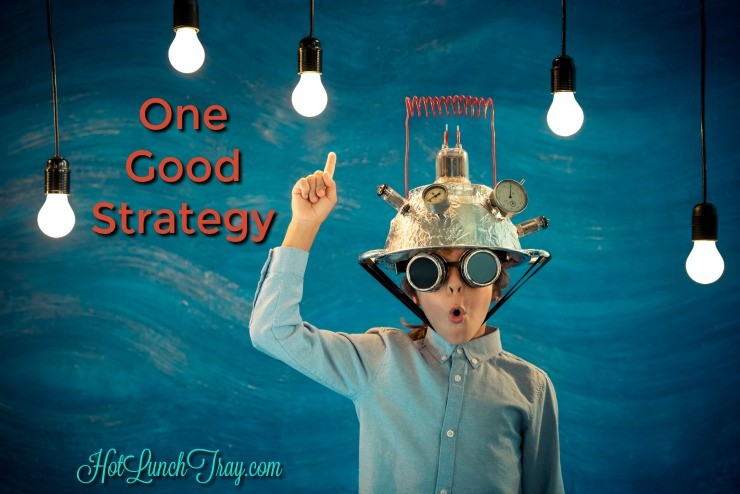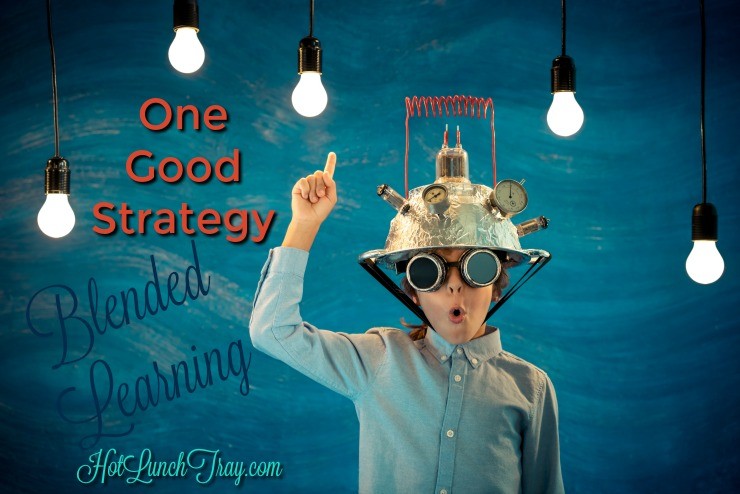Early learners of anything flounder. Their learning is almost visible in their struggles. It is easy to forget how little things can make a big impact. Anyone in the nascent stages of learning something needs the same thing – one good strategy.
Educators often struggle with certain aspects of their profession at stages in their career. Early in an educational career, classroom behavior and direct instruction are often the focus. Almost all teachers have strategies to share on classroom behavior as most teachers have managed, or not managed well, a face-to-face classroom. Direct Instruction is another challenge identified earlier in a teaching career. This is usually self-identified or addressed by an educational supervisor. Again, there are a plethora of strategies for dealing with what many teachers have perfected, the best way to provide whole/small group instruction efficiently. Identifying one good strategy to use in these situations is both a place to start and from which to grow.
Any school leader knows the typical progression of the career of a face-to-face teacher because that is what we have done for generations of educators. We can identify the upcoming challenges because of the vast prior experience we have with face-to-face instruction.
What about the Blended Learning classroom?
Blended Learning is concept enabled by the increasing availability of access to the Internet. An idea of providing portions of classroom content outside the physical and time constraints of a traditional classroom. You can find pertinent definitions and approaches here: Innosight Institute (2010) and iNACOL Blended Learning Teacher Competency Framework (2014). Also note my interpretations/compilations from some of these larger works: How Much Online Content in Blended Learning? and Where are you on the Learning Continuum?. As a newer educational approach, current educators do not enjoy the benefit of a variety of proven strategies from which to select; all educators at all stages of our career are venturing into this new idea at the same time.
A key indicator of Blended Learning is pacing, according to The Christensen Institute. And while you can offer different flavors of pacing in blended environments, the main idea is to allow access to course resources in an on-demand manner.
One Good Strategy: Concentrate on “flipping” traditional instruction.
Traditionally videos of your instruction students view at home (versus doing unguided/supported practice activities), flipping a classroom could also mean pre-reading assignments. Is there one portion of your course which students could complete at home? A video of you talking through the powerpoint presentation? You showing how to do a math problem? Some pre-reading? A meaningful post to a discussion board? And then do their homework or practice guided by you in the classroom?
BONUS: Jon Bergmann, Flipped Learning Guru, gives tips on making your videos.
Every teacher works with parents, but a new level of trust and verification is required for blended learning school-home relationships.
One Good Strategy: Harness the power of the online tools in your learning platform.
Maintain news and classroom events online; when parents ask about news and events direct them to that constant, updated online resource. Consider embedding a Google Document in a web page, discussion board, and/or in a common area in your learning platform. Updating ONE document can spread changes throughout all embedded destinations.
BONUS: explore the features of your learning platform for the places parents can and cannot login, can and cannot review content/assessments, and can/cannot view the work of students other than their own.
Probably the most under-rated skill of a Blended Learning educator is creation of online content. The instructional design skills of a teacher can make or break the blended learning environment.
One Good Strategy: Identify categories of content for focal point of content creation each school year.
Build out ONE feature or ONE category for your course each school year. Content creation can be an over time approach, but it should always be strategic. What is The One thing you think students and their families would benefit from accessing anytime? Submitting online?
BONUS: Consider partnering with a trusted colleague to share the load. He does all the projects, you do all the assessments perhaps?
Even though education is new to the idea of Blended instruction it doesn’t mean you don’t already have a good strategy of your own.
Please share One Good Strategy!







1 Pingback